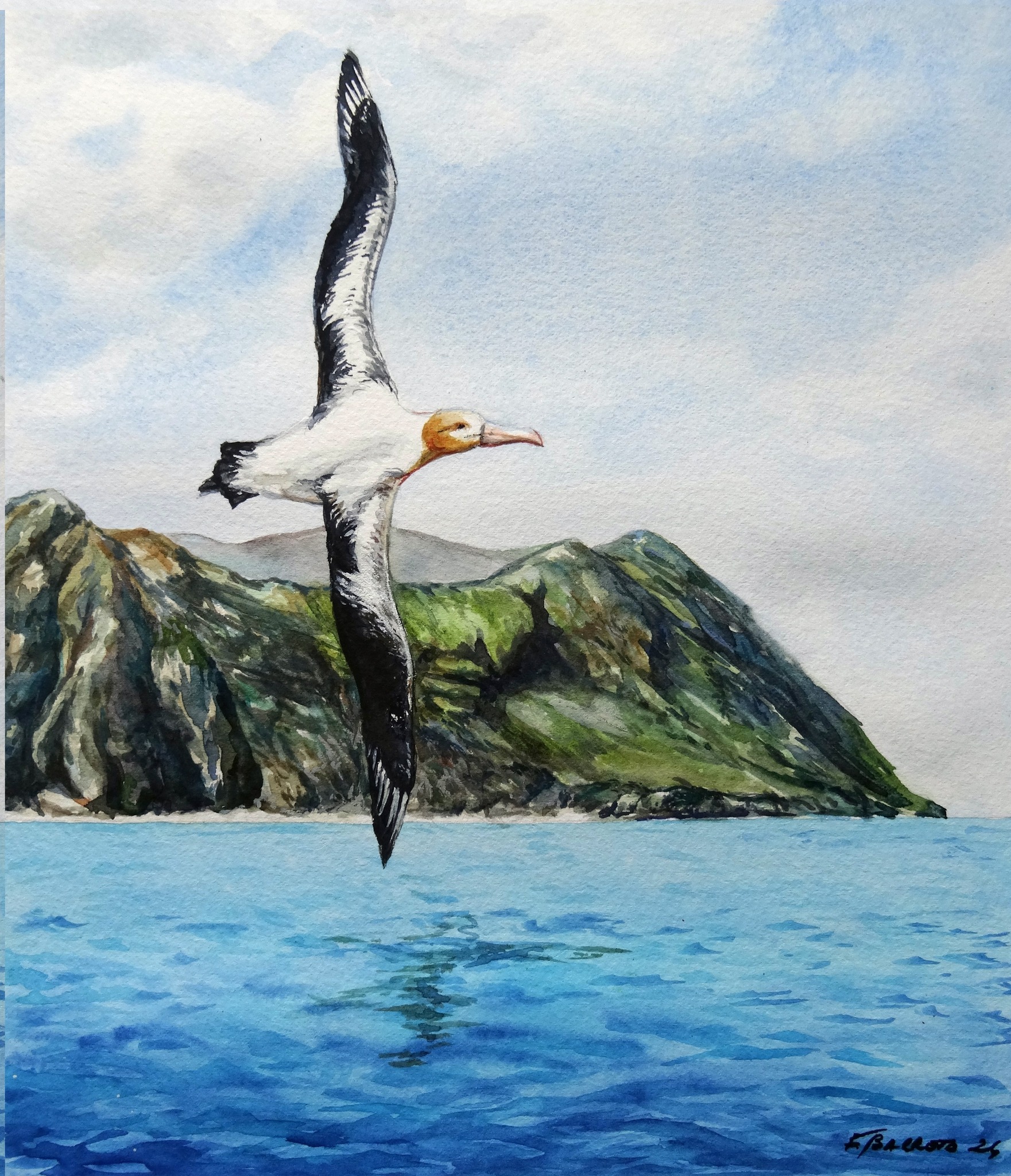
A Short-tailed Albatross flies past Japan’s Torishima, its main breeding site. Artwork by Flávia Barreto
For five years the Albatross and Petrel Agreement has collaborated with Artists & Biologists Unite for Nature (ABUN) to produce art in support of World Albatross Day (WAD) on 19 June. Each year ABUN artists are requested to create artworks that represent an annual theme. This year ACAP has chosen the theme “Marine Protected Areas - Safeguarding our Oceans”. The artists have been requested to feature two albatross species, the Near Threatened Buller's Albatross Thalassarche bulleri and the Vulnerable Short-tailed Albatross Phoebastria albatrus. as part of ABUN’s 47th Project in their interpretations of the MPA theme. Project #47, set to run from 27 January to 21 April following an extension, has so far produced 35 artworks from the pens and brushes of 21 “ABUN-ers”, some of whom have turned out more than one work. The most prolific as the project draws to a close is Flávia Barreto, who has produced no less than six paintings, three for each of the two featured species.
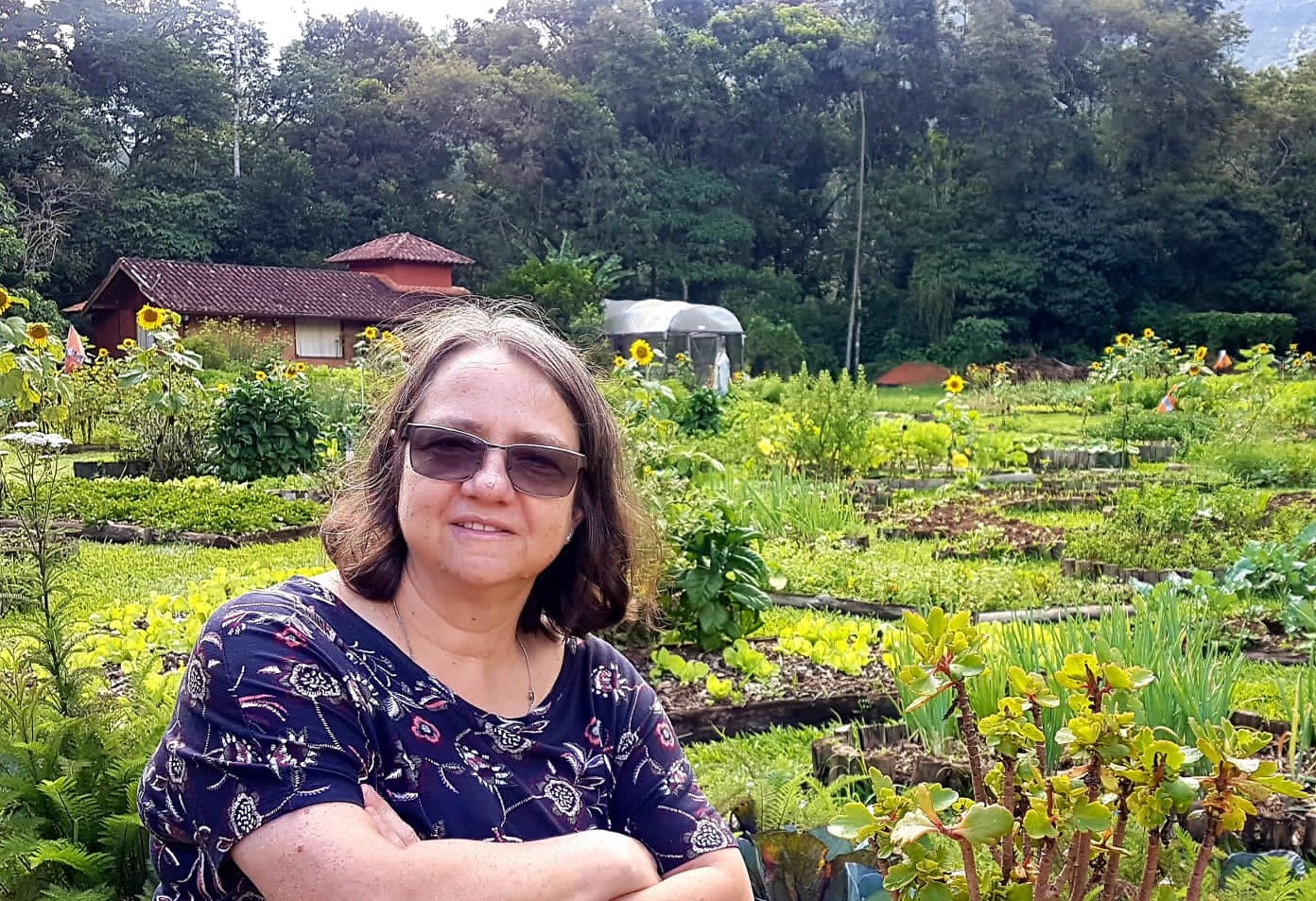
Flávia Barreto in a garden setting
Flávia is no stranger to ACAP Latest News, her paintings have been the subject of ACAP Latest News articles for both WAD2022 and WAD2023. She lives in Nova Friburgo, Brazil and paints in watercolour, gouache and acrylic. Flávia has described herself as an amateur artist and a retired civil servant. After retirement she decided to dedicate her life to art. Being a lover of nature and animals, her art and interests have gradually evolved to drawing and painting threatened species (click here). Her three works illustrated here are all of the Short-tailed Albatross. The first, above, takes cognisance that albatrosses live in two different worlds: on their breeding islands and at sea, where MPAs can help protect them from fisheries mortality and overfishing.
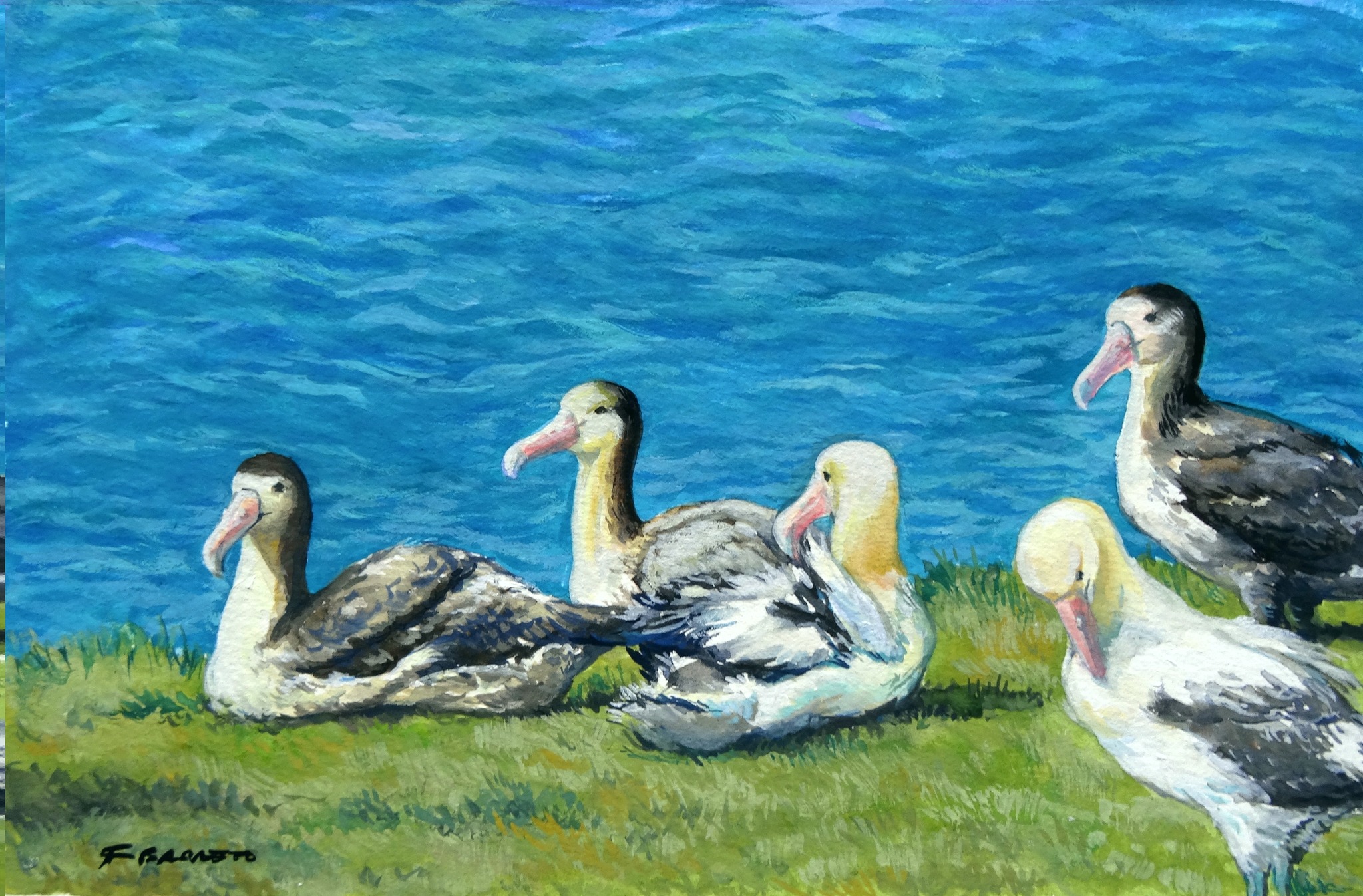
Short-tailed Albatrosses gather at the new colony of Hatsunezaki on Torishima. Artwork by Flávia Barreto
In her second painting, Flávia has chosen to work from a photograph taken by Naoki Tomita in the recently established Short-tailed Albatross colony on Torishima. The original colony, known as Tsubamezaki, is on a bare steep slope and is at permanent risk to egg and chick loss from landslides, erosion and from potential volcanic activity. As a consequence, the Yamashina Institute for Ornithology successfully implemented “Operation Decoy” with the use of 90 life-like model albatrosses and audio playback recordings to attract birds to a safer, gently sloping grassed site elsewhere on the island, known as Hatsunezaki. This new colony is now well established, fledging chicks every year.
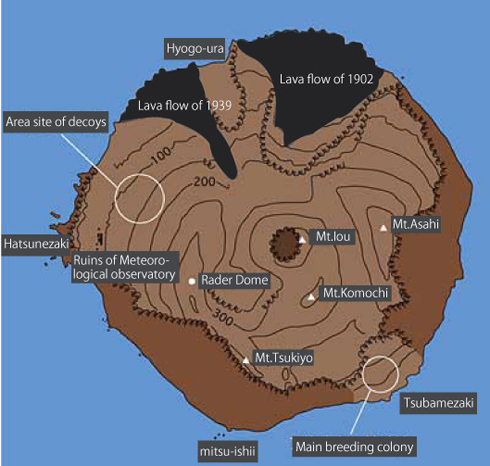
Torishima, with the two Short-tailed Albatross breeding sites circled, from the Yamashina Institute for Ornithology
Elsewhere in the North Pacific, a single pair of Short-tailed Albatrosses breeds on the USA’s Midway Atoll, where they are affectionally known as George and Geraldine. Flávia’s painting below depicts the darker female incubating on the nest, with the male (now longer known as “Lonesome George” after six years of breeding with Geraldine) behind. They are now busy rearing their fifth chick (click here).
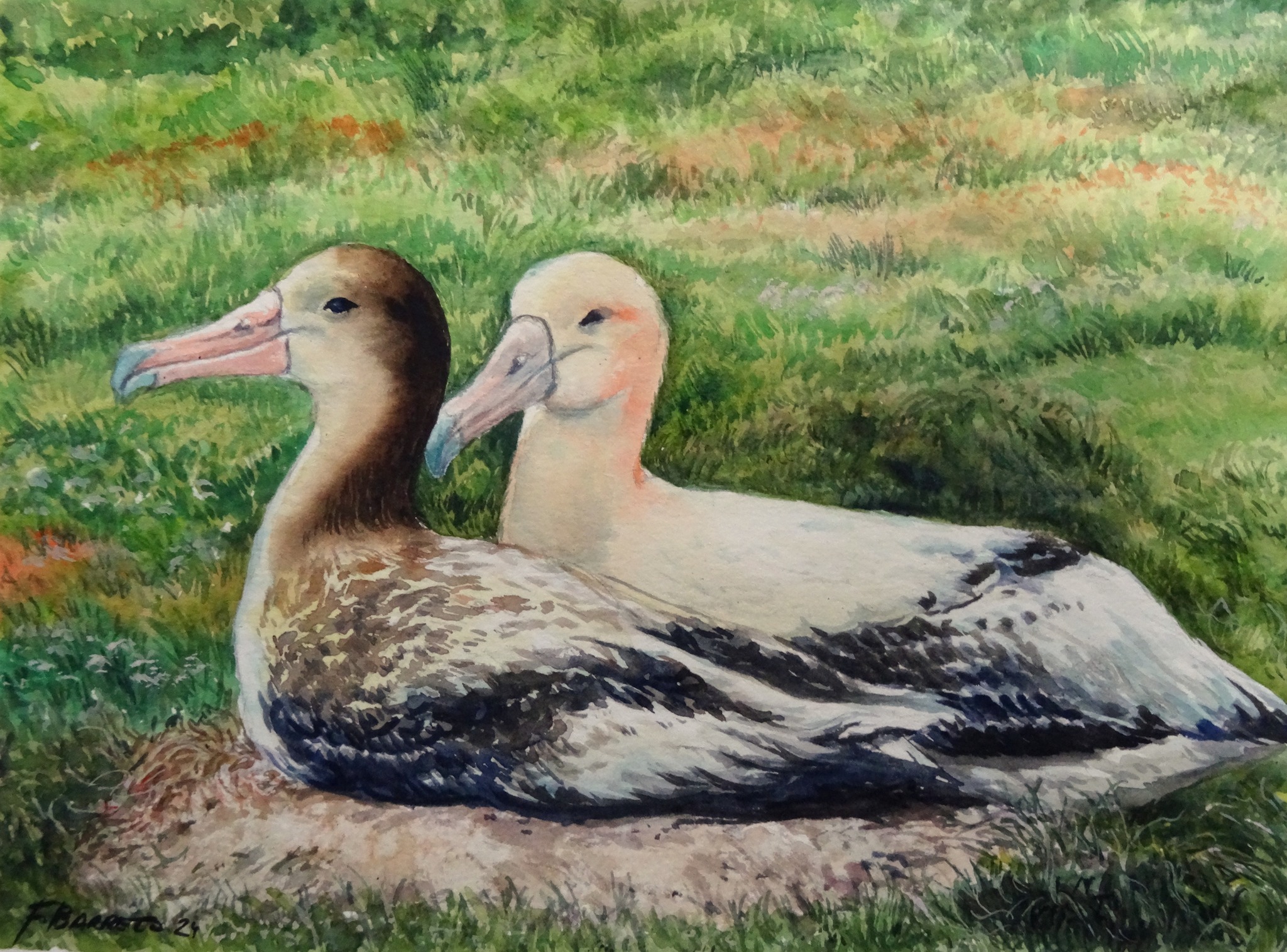
Short-tailed Albatrosses George and Geraldine on Sand Island, Midway Atoll. Artwork by Flávia Barreto after a photograph by Jonathan Plissner, 15 January 2022
John Cooper, Emeritus Information Officer, Agreement on the Conservation of Albatrosses and Petrels, 18 April 2024

 English
English  Français
Français  Español
Español